A while back, we ran a story about the most overlooked and forgotten muscle cars. That article itself was inspired by a social media post from our pals over at Summit Racing who’d asked for reader contributions on the subject
But after reading through the hundreds of comments, we discovered that even diehard gearheads aren’t exactly sure on the nebulous boundaries of muscle car classification—and that uncertainty increases the newer the cars get.
So much like we did with our “What Makes a Car a Classic?” article, we’re going to dive into the muscle car topic.
Before we go any further, let’s stress that this is mostly an opinion piece, and we welcome any discussion on this topic. Get the conversation started in the comments section at the bottom of this article.
The Origin of the “Muscle Car” Term & What It Meant

While it’s often used casually by folks outside the hobby to define any car with a big engine, most gearheads agree that the true definition of what’s considered a “muscle car” has a lot more nuance.
That said, plenty of enthusiasts draw a straight line back to the Olds 88 when it comes to the vehicle that first inspired the term. Wedged between the spartan 76 six-cylinder base model and the heavier, more posh 98, the Oldsmobile 88 was a Goldilocks ride for spirited drivers.
That’s because the 88 came with modern V8 power in a midsize package. With overhead valve architecture and hydraulic lifters, the high-tech 303ci V8 engine made around 135 horsepower—which doesn’t sound like much nowadays, but it was better than a Flathead Ford V8 and, in the 1940s, those 135 ponies were enough for the engine to earn the “Rocket” nickname.
In other words, the Oldsmobile 88 established the “big engine in a midsize car” approach that became the muscle car template from then on.

That recipe was perhaps perfected in 1964 with the Pontiac Gran Turismo Omologato—or GTO, if your short on time. The GTO’s sales numbers quickly encouraged the other GM brands to spin-up their own midsize performance variants, and cars like the Chevelle SS, Buick GS, and Oldsmobile 442 quickly followed.
Elsewhere in Detroit, Ford offered hopped-up versions of its intermediate Fairlane—including the NHRA homologation special, aptly named the Thunderbolt. And over in Mopar world, you could soon get the legendary 426 Street Hemi motor in cars like the midsize Coronet and Belvedere too.
By the end of the 1960s, the big engine/midsize car formula was firmly established and the cars that came from that era are synonymous with the term muscle car—which may explain why the title is so hard to pin onto any vehicle made after, say, 1972. But let’s keep going down the muscle car timeline a bit.

Muscle Car “Malaise” & Beyond
The muscle car waters start to get murky in the 1970s because, if we’re being frank, the muscle diminished as the automotive industry worked to adapt to tightening emissions standards and consumer demand for better fuel economy—while at the same time, insurance companies were busy hiking rates for heavy-footed drivers.
Suffice it to say, there were plenty of reasons why the latter half of the 1970s is sometimes referred to as the “malaise” era for the American automobile.
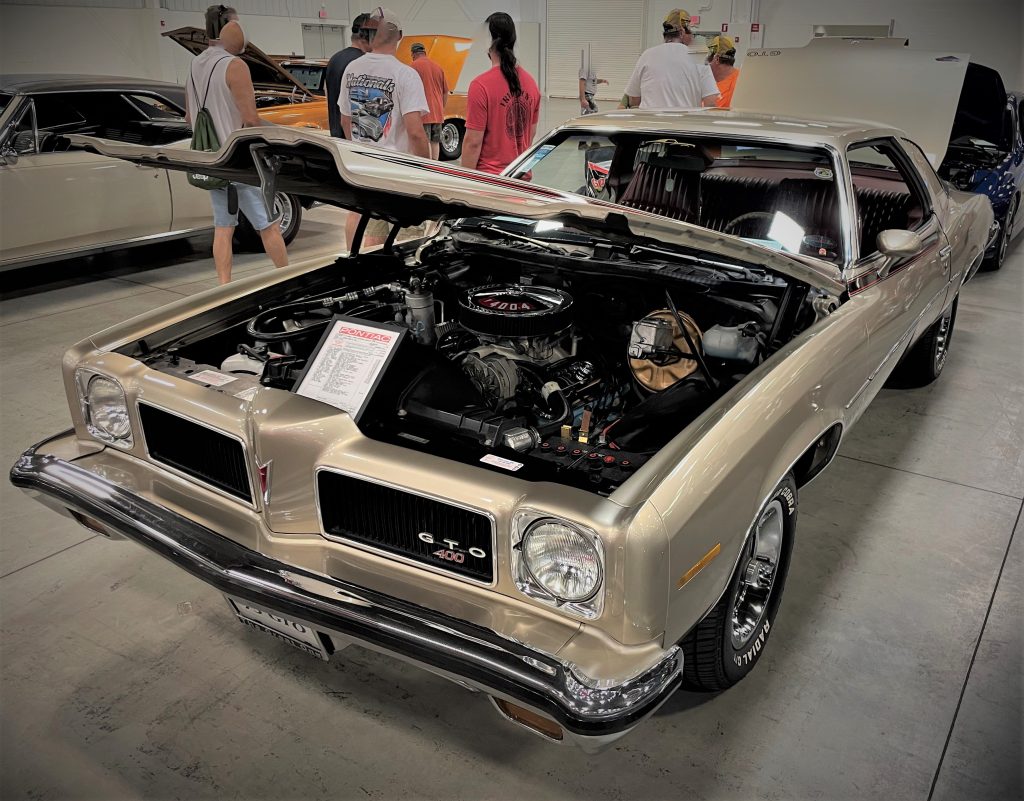
As the 1970s stretched on, muscle cars transitioned into grand touring coupes, with more emphasis placed on ride quality and efficiency. One by one, stalwart holdouts like the Charger, Roadrunner, Torino, Chevelle, and (gasp!) even the Ventura-based GTO rolled into the sunset.
Yet there were some bright spots. Cars like the Pontiac Can Am and Chevy Laguna S-3 carried on the muscle car tradition, albeit with power down from its peak just a few years prior. Even the budget-minded Dodge Aspen had a V8-powered R/T performance variant—with an optional Pistol-Grip four-speed, no less.
Regardless of horsepower numbers, we think it’s fair to classify those long hood, rear-wheel drive V8 coupes as muscle cars.

But at the 1980s dawned, it was clear that the automotive industry was figuring out performance in the nascent fuel injected era—particularly over at Buick where its engineers refined the turbocharged 3.8L V6 made famous in the legendary Grand National.
Yes, the famed Buick Grand National was running V6 power. But that didn’t stop it from earning some serious muscle car street cred, did it? Indeed, the GN’s 245 horsepower 3.8L six puts the entire muscle car definition into confusing territory—especially when you consider its V8 stablemate was lucky to make 150 hp.

Outside of the Grand National and its GM G-body cousins like the Monte Carlo SS, Cutlass Supreme 442, and Pontiac Grand Prix 2+2, several other cars took up the muscle car mantle during the 1980s and 1990s as well.
For example, as they evolved from their luxury touring image forged during the 1970s, the Ford Thunderbird and Mercury Cougar twins emerged in the 1980s as legit muscle cars, complete with V8 power. Interestingly, depending on the year, you could also get the Thunderbird with the turbocharged four borrowed from its cousin, the SVO Mustang.
…Which isn’t that surprising, because the Thunderbird and Cougar were built on the beloved Fox platform shared with the Mustang—yet were roomier than their pony car stablemate, pushing them back into muscle car midsize territory.

So, What Are “Pony Cars” Then?
Since we just mentioned the Fox Body Mustang, it’s worth pointing out the distinction between muscle cars and pony cars—technically speaking, there is a difference.
And we’re not being pedantic here, as all three of the major Detroit automakers had separate models targeted at the distinct midsize muscle car and pony car categories.

What was the first pony car?
Spoiler alert, it wasn’t a Mustang. Nope, despite the equine nomenclature, the first pony car was actually a fish—yup, a Barracuda to be precise. A chronological nitpick for sure, the Valiant-derived Barracuda actually hit the market a few weeks before the Mustang galloped onto the scene in 1964. But when the Mustang did arrive, it was a near-instant success and quickly established the pony car segment.
Caught off-guard by the success of the Mustang, both AMC and GM accelerated plans for the fast-growing market. In 1967 both the Camaro/Firebird and the Javelin hit the streets. Pretty soon after that, Mopar unleashed a second-gen. Barracuda into the growing pony car wars and, in 1970, the E-body Dodge Challenger entered the fray.

OK, so enough history already, here’s the distinction in a nutshell: Unlike a muscle car, a pony car typically rides on a smaller, compact chassis and additionally, the car is often designed from day one with some sport pretenses. (In other words, a base model Camaro is still a pony car, whereas a base model Chevelle would be an ordinary midsize passenger car.)
Semantics aside, many causal gearheads lump pony cars into the muscle car category. And since this is a debate on muscle cars, we wanted to mention pony cars and quickly contrast the two segments.
What About Sports Cars?
Finally, an easy one to answer. Sports cars, by definition, are built from a blank page with some sort of performance bias, whether it is a featherweight British roadster powered by a zippy four-banger, or a Dodge Viper with 10 angry cylinders firing mercilessly under the hood.
Sports cars are almost exclusively* offered in a two-door coupe or roadster body, and in either a two-seat or a 2+2 (modest back seat) arrangement.
* We say almost there, simply because you can get some deviations from that sports car recipe with, say, a shooting brake or a three-door configuration.

So while sports cars may have some muscle *cough – L88 – cough*, the fact that these cars are designed to have some inherent performance from the get-go, sets them apart from a traditional coupe that, after the addition of a big engine, rumbles onto the performance scene as a muscle car.
Enough Already! What Defines a Muscle Car?
With all that history, terminology, and context out of the way, let’s get down to it: What makes a car, a muscle car?
While we’ve established that the traditional formula is “big engine, midsize car,” in practice classifying cars by that metric isn’t as straightforward as you’d think.
For starters, what makes a “big” engine? Displacement or power output?
Take the Dodge SRT-4 for instance. It came with a 2.4L (146 cubic inch) engine that made 230 horsepower. For reference, if we’re using net horsepower, that’s pretty much what the base 400 engine in a 1972 GTO delivers. And it’s making that power with half of the cylinders—via front-wheel drive.
All told, a bone stock SRT-4 could do low 14s right off the showroom floor, easily enough giddayup to be considered a muscle car.

That said, since it’s based on a Neon, the SRT-4 is considered a “sport compact” and is smaller than a vintage GTO. So if physical size is a sticking point, let’s talk about the Pontiac G8 and Chevy SS.
For starters, their wheelbases are around 115 inches—which, if you’re playing along at home, is pretty much equal to a 1965 GTO. And there’s only about a 10 inch difference in overall length.
Secondly, the Holden-sourced G8 and SS have plenty of V8 oomph, notably both the G8 GT and SS at one time shared the 426+ horsepower LS3.

But then again…the G8 and SS both have four doors. So, is there somewhere in the gearhead rules that says muscle cars need to be coupes? Sure, there’s historical precedent, but that would eliminate a ton of modern, late model performance vehicles.
As a counterpoint, let’s bring up some of the overseas models from Ford and Chevy—specifically for the Australian market. For whatever reason, sedans are far more prevalent Down Under, but if you’ve ever seen a vintage four-door Fairmont XA, you probably put it into the muscle car category, right?
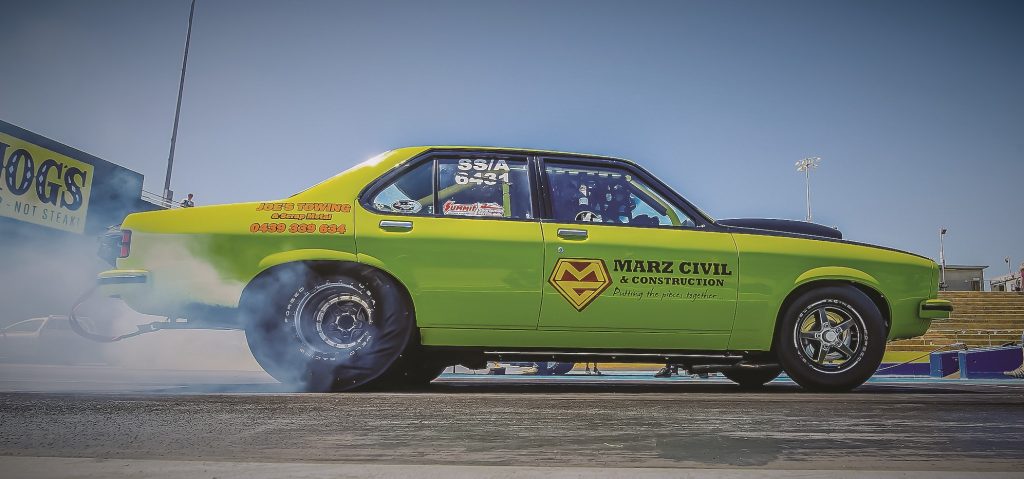
Other four-doors that spring to mind are the 1994-96 Impala SS Bubbles. A 5.7L small block Chevy LT1 V8 and a Positraction rear end are popular ingredients in the muscle car recipe—and were standard on the seventh-gen. Impala SS.
Of course, there’s always the fan-favorite Ford Panthers too.
For example, the length of a Crown Vic is pretty similar to, say, a first-gen. GTO. And, with Ford 4.6L V8 mod motor power under the hood, the Mercury Marauder made north of 300 horsepower. In the same vein, the Police Interceptors had many similar performance upgrades as well.
So, does that not vault some Panthers into muscle car territory?
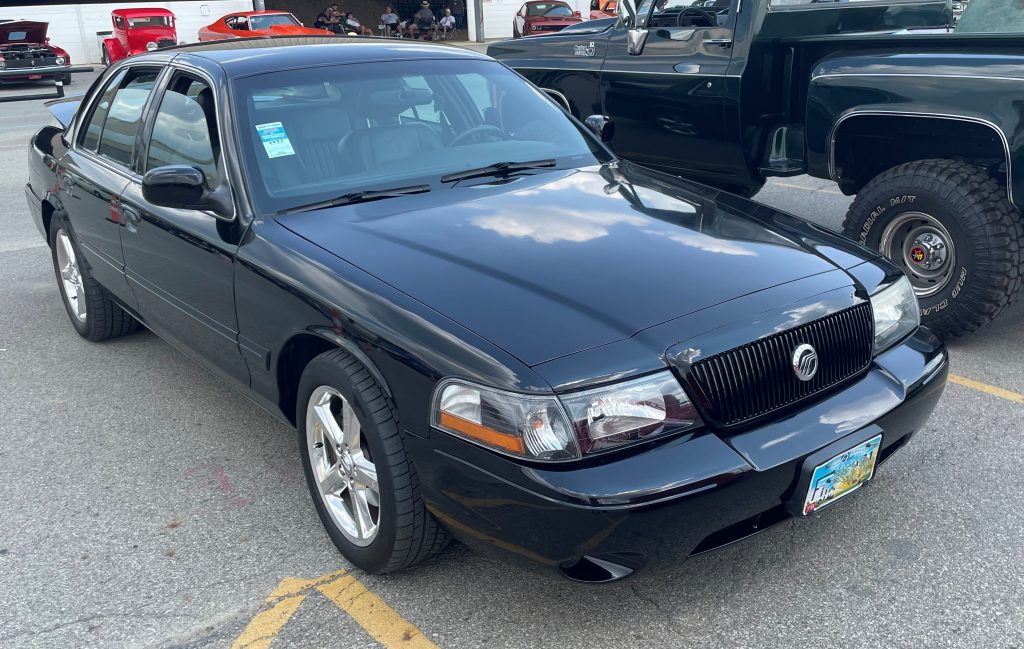
The Elephants (pun!) in the room are the Hemi-powered Challenger/Charger cousins. Let’s begin by putting the Challenger into the pony car arena, along with the Camaro and Mustang. Even though it’s more of a grand tourer, we feel the Challenger belongs there simply because of historical precedence.
That leaves the Chrysler LX/LD platform Charger (and, sure, the 300 too). Though Dodge purists may snicker at the thought of four-doors, the late model Charger has Hemi power and enough throwback styling cues to plant it firmly into the muscle car world. Toss-in classic “High Impact” colors like Go Mango, TorRed, and Plum Crazy, and we’re sold.

All told, there are plenty more examples of V8-powered sedans, 300+ hp four cylinder engines, and compact/midsize classification overlaps nowadays too…
…So perhaps using a template established 50+ years ago to classify a muscle car is a futile effort?
Recharging the Muscle Car Question
There’s a final point to touch on and it is probably going to be the most controversial—could an electric vehicle be considered a muscle car?
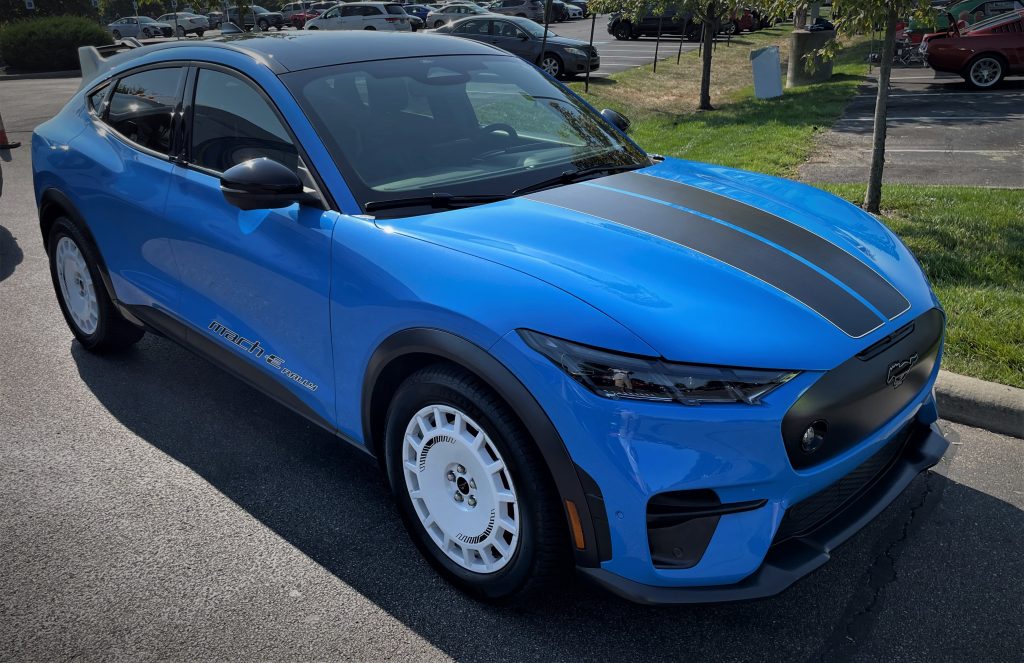
It’s tough to argue on the quantitative side though. Vehicles like the Tesla Model S and the Mustang Mach-E can rip-off 11s in the quarter mile without too much effort. Suffice it to say, those numbers would’ve bested pretty much any street car from the 1960s.
The qualitative facet of a muscle car is much tougher to pin down here.
Sure, you lose the exhaust note and the visceral feel of a rowdy engine pounding away under the hood, but performance-biased EVs under a hard launch still have a unique sound and feel that could easily be described as aggressive. And the torque-on-demand nature of an electric motor rocketing off the line is an experience that cannot be described with words.
It’s a question that needs to be asked: Does a muscle car need an internal combustion engine?
***
The Great Muscle Car Debate Rages On
OK, so those are our takes on the muscle car metric. Do you agree with our assessment on what truly defines a muscle car here?
Four doors? V8s? Rear-wheel drive? Keep the conversation going in the comments section below—we’d love to hear your feedback.
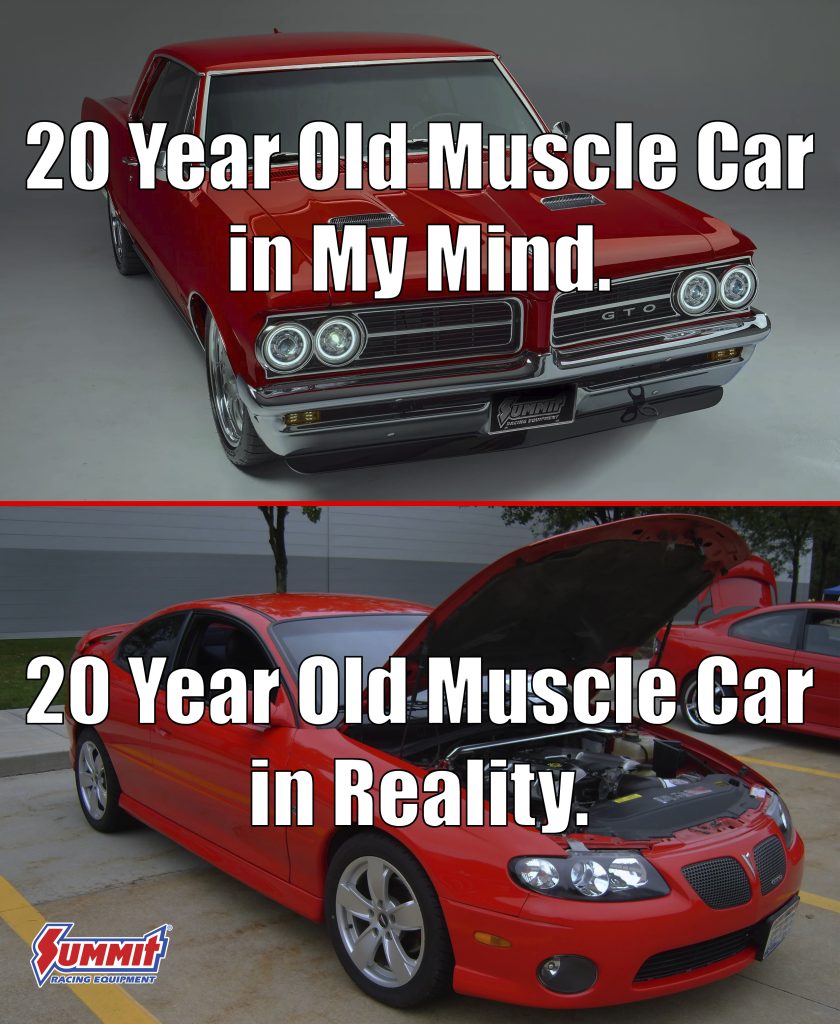
***

Comments